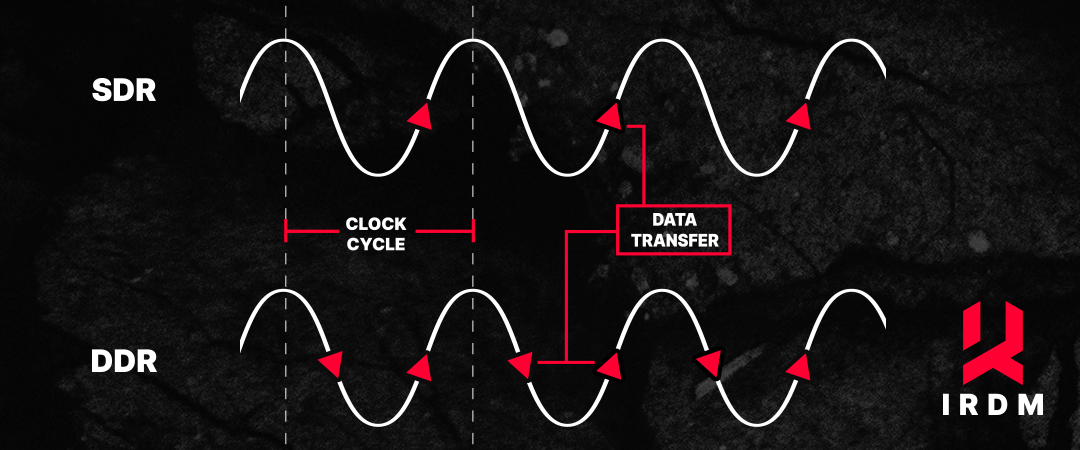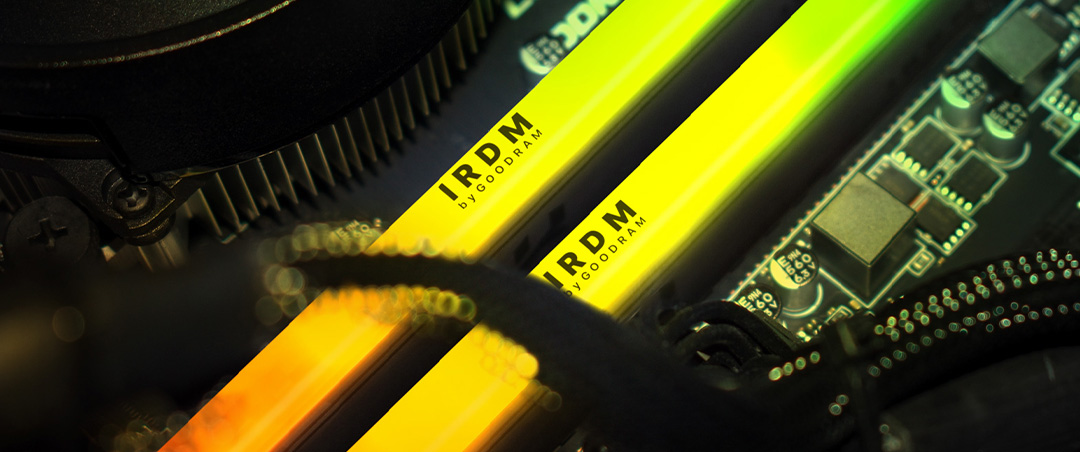All about RAM timing
20 December 2023Latest modification: 20 December 2023
Frequency of RAM modules
Speed otherwise known as memory frequency determines the speed at which a memory module can transfer data between the processor and the computer’s operating memory. The most commonly used unit of speed is MHz, or megahertz. It was introduced into common nomenclature in the late 1990s with the introduction of the first SDR (Single Data Rate) memory modules. Data transfer is measured in terms of motherboard clock cycles, and the MHz unit itself stands for one million cycles per second, or otherwise one million hertz (106 Hz). SDR memory allows data transfer only during an ascending clock cycle, so the MHz unit fits perfectly to describe the actual speed of SDR modules.
Nowadays, DDR, or Dual Data Rate, memories are used, and as the name suggests with this type of memory there are two data transfers per motherboard clock cycle. This means that the transfer occurs twice as often as with SDR memory. Despite this leap, memory manufacturers are still more likely to use the MHz unit to simplify communication regarding the speed of memory modules. A more precise unit describing the real speed of DDR modules is MT/s (megatransfers per second or million transfers per second). In simple terms, a value of 1 MHz corresponds to 2 MT/s for DDR memory.

Whichever unit you use, the principle is simple – higher clocking means faster memory, which directly translates into better computer performance in selected applications, and the performance increase is most noticeable in games and advanced applications for professionals.
Differences between MT/s and MHz
Since we know that 1 MHz equals 2 MT/s, we can think that DDR4 modules with a speed of 3600 MHz correspond to a value of 7200 MT/s?
Nothing could be further from the truth! The value of 3600 MHz should be written as 1800 MHz, which can be seen in programs that show the parameters of computer components (such as CPU-Z). The value given on module packaging most often specifies MT/s instead of MHz.

Why is this so? The lack of confusion in naming the speed parameter works to the advantage of users who may have trouble understanding the origin of these units. For DDR memory, from the very beginning, the MHz values on the packaging were doubled, making it unnecessary to change the entire nomenclature. However, there have been changes in this regard for some time, as can be seen in many RAM manufacturers.
Overclocking modules and OC profiles
It’s worth knowing that each module right out of the box offers the lowest speeds and highest latencies, which are a direct result of the nominal values of the memory dice, which conform to the JEDEC standard.
In order to take full advantage of the modules’ capabilities, then the user should use the manufacturer’s OC profile, which should be activated from the BIOS/UEFI of the computer. For Intel platforms it is called the XMP profile, while for AMD it is the EXPO profile. For modules that do not have a dedicated EXPO profile for AMD, then it is possible to activate the XMP profile that is compatible with the red platform – this profile is called “D.O.C.P.”. Activation of the aforementioned OC profile sets speeds, latencies and voltages to those specified by the manufacturer on the memory packaging, which has a huge impact on computer performance.

There is a second method, for the more experienced and those who like to experiment and spend a little more time on the configuration to make sure that close to 100% of the capabilities are used. Even if you have a ready-made OC profile, you can attempt to narrow the latency, increase the frequency or both modifications at the same time. When improving any value, it is suggested to test the whole computer in synthetic conditions, or at least in games, to check the stability of operation after increasing the performance of the modules. The degree of benefit you can get from manually overclocking the modules depends on the specific unit. The manufacturer guarantees stable operation on the declared parameters, because on them the modules have been run and fully tested, but this does not limit the possibility of experimentation.
It is worth knowing that the frequency of memory operation is closely related to latency (CAS Latency), about which more in the next article.
Have questions or want to add something? Write to us at marketing@goodram.com.
You can also find contact to us on the Facebook platform – GOODRAM/IRDM.